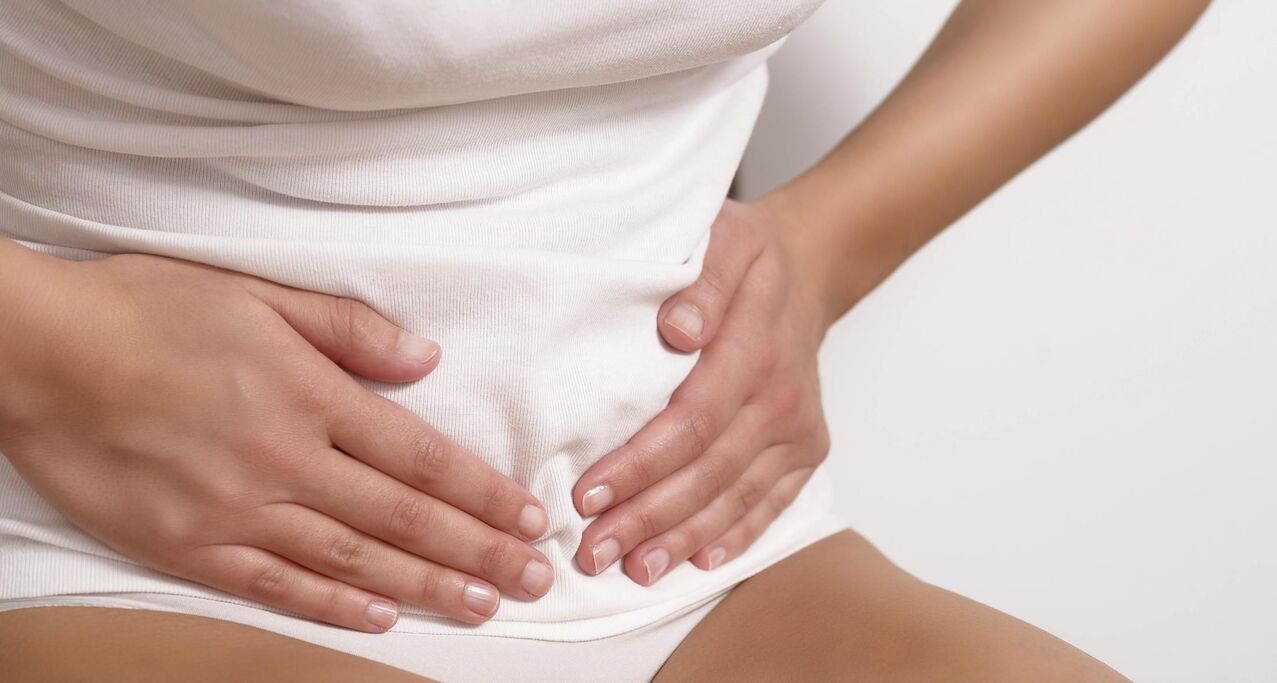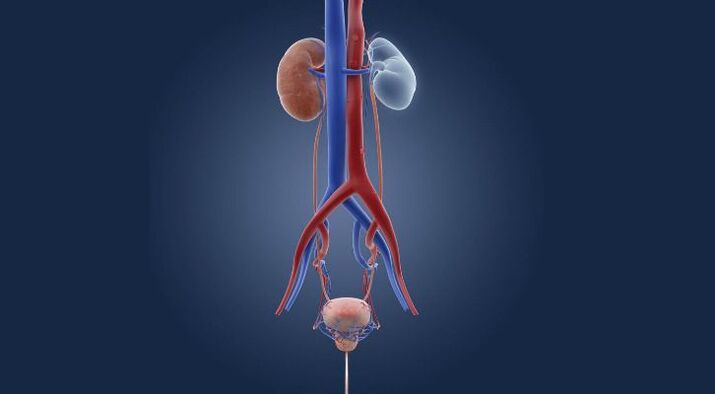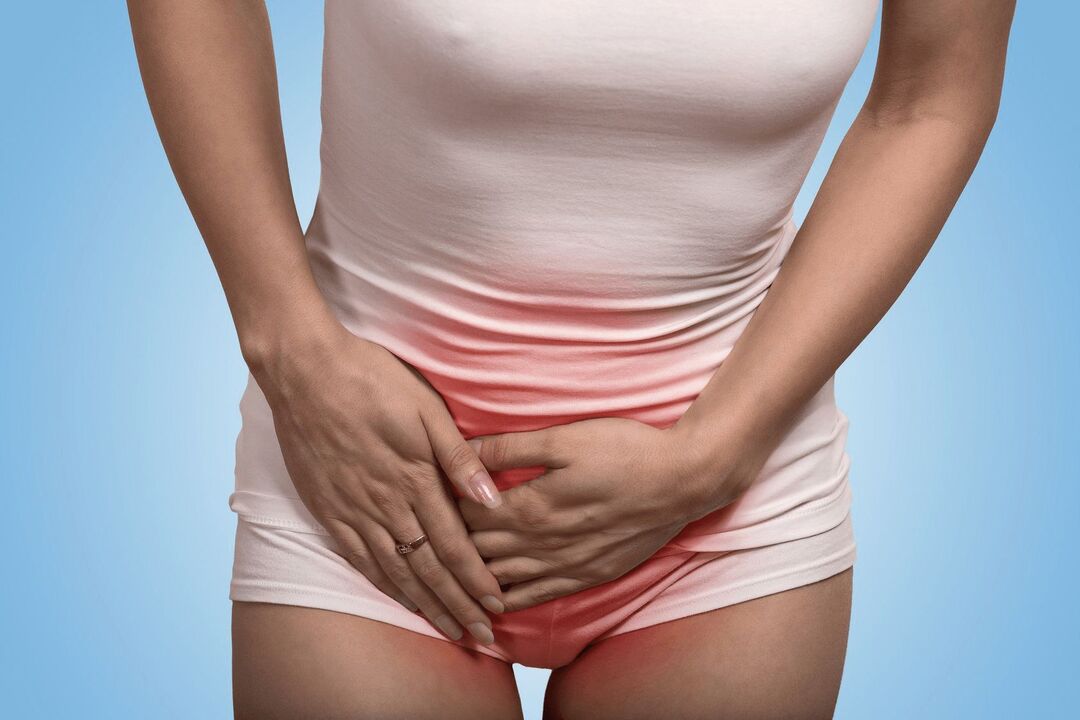Cystitis is an inflammation of the bladder. This organ is intended for the collection and excretion of urine, but if the lining of the organ is damaged, its function suffers, and the person begins to experience unpleasant symptoms. In most cases, the pathology only affects the mucous membranes, but sometimes the inflammatory process also extends to the muscle tissue. Interstitial cystitis is the most difficult to treat.
The disease mainly affects women, which is associated with anatomical features of the urethra. Inflammation in men rarely appears, usually acting as a comorbidity against the background of chronic prostatitis.
symptoms
The signs of cystitis are quite obvious, and it’s hard not to notice them. As a rule, the disease begins acutely, which is why patients pay attention to the obvious discomfort in the urinary tract. Among the pathological manifestations observed:
- frequent urge to urinate;
- incomplete urination;
- cramps and pain when urinating;
- increased body temperature;
- the appearance of a mixture of blood in the urine;
- cloudy urine (due to the presence of pus);
- nausea, pain as during menstruation.
Despite the characteristic symptoms, the disease can give different manifestations. Hematuria is not always present, but pain in intensity can only resemble mild discomfort. In any case, if pathological signs occur, it is necessary to consult a doctor to make a diagnosis as early as possible. Diseases in the acute phase in the early stages are best treated, but the chronic form takes longer to fight.
Forms and types of chronic cystitis
By the nature of the inflammatory process, cystitis is acute and chronic. Depending on the source of development, the disease can be primary (disease independent) or secondary (inflammation spreading from adjacent areas, such as the kidneys).
According to the area of damage to the mucous membrane of the bladder, cystitis occurs:
- amount (general);
- focus.
The following clinical forms of cystitis are distinguished:
- catarrhal - non -purulent inflammation of the bladder mucosa;
- phlegmonous - purulent lesions of the submucosal layer;
- granulomatous - accompanied by a rash on the mucous membranes;
- hemorrhagic, characterized by the release of blood in the urine;
- interstitial cystitis - inflammation spreads to all layers of organs.
A number of rare forms are also distinguished: ulcerative, cystic, gangrenous cystitis.
The whole range of inflammatory diseases of the bladder is combined into two major groups:
- specific cystitis, caused by sexually transmitted pathogens: gonococci, ureaplasmas, chlamydia.
- non -specific cystitis - develops through the fault of opportunistic flora, whose representatives in normal circumstances do not lead to disease (for example, E. coli).
Finally, non -infectious cystitis was combined into separate groups. They can occur under the influence of allergic factors, radiation, traumatic, thermal effects, parasitic toxins.
The cause of cystitis

In most cases, damage to the bladder and the development of inflammatory processes are associated with the penetration of infection, however, cystitis can be toxic and allergic. When an infection enters, the disease is spread in several ways:
- ascending - from the urethra through the urethra - affects the bladder;
- decreased - in this case, the infection appears as a result of inflammation of the kidneys, through the ureters, reaching the bladder;
- lymphogen - by the flow of lymph through the pelvic organs in the presence of lesions of the genital organs;
- hematogenous - infection enters with the bloodstream, but this route of transmission is the rarest;
- direct - if the abscess ruptures in the bladder, and the pathogenic microflora penetrates directly into the bladder cavity, it can also occur during organ catheterization, infection during surgery.
Often, E. coli causes cystitis. It occurs in 80-95% of cases of uncomplicated pathology. These bacteria are usually found in the rectum, but when they enter the urethra, it provokes an inflammatory process. Enterobacteria, staphylococci, fungi, sexually transmitted infections can also cause this disease. It usually precedes the onset of symptoms of vaginitis or bacterial vaginosis, and you can also see symptoms of the disease within a day after intercourse (postcoital cystitis).
Factors contributing to the development of cystitis
The body with good immunity can cope with the presence of pathogenic microflora, so the symptoms of cystitis in patients will not appear. But when exposed to several factors, it shows itself:
- injury to the mucous membrane of the bladder;
- circulatory disorders of the pelvic organs;
- hypothermia;
- the presence of other foci in the body, such as kidney infections;
- a decrease in the body's defenses;
- inflammatory diseases of the genital organs;
- lack of vitamins and minerals in the body;
- hormonal imbalances;
- inadequate hygiene, wearing synthetic underwear;
- stress and overwork;
- delay in emptying the bladder.
With the presence of these factors, cystitis will develop rapidly, and chronic pathology will move to a relapse stage. Therefore, to prevent relapse, it is necessary to exclude the influence of provoking factors on the body.
The cause of the transition of acute inflammation to the chronic phase
The inflammatory process in the bladder can occur due to various pathogens. Often it is bacterial, but there are cystitis and viral, fungal etiology. If the acute form of the disease is diagnosed in a timely manner, proper treatment of cystitis is prescribed, and the patient follows all the recommendations of the doctor, then the pathological process can be completely eliminated, and recovery will come.
But often women postpone a visit to the doctor, trying to treat cystitis themselves, in the hope that everything will go away on its own. As a result, valuable time is wasted. Microorganisms are actively multiplying, the intensity of inflammation increases. Once "settled" completely in the bladder, the microbes will not release their position so easily. Inflammation becomes chronic.
It is also common for a specialist to prescribe treatment for cystitis, the patient starts taking medication and stops therapy on his or her own by the time he or she feels relieved. As a result, the pathogen is not completely destroyed, and the survivors split up - chronic cystitis is formed, which is resistant to antibiotic therapy.
Finally, the following conditions contribute to the development of chronic cystitis:
- general decrease in immune defenses, hypothermia;
- hormonal changes (pregnancy, menopause);
- ignoring the rules of personal hygiene;
- gynecological diseases;
- chronic diseases of other organs and systems: diabetes mellitus, malignant tumors.
Signs of chronic cystitis
In today’s medical community, the term "chronic cystitis" is obsolete. It is used the "old way", for better communication with patients. The slow inflammatory process in the bladder is called recurrent cystitis. The main symptom is the development of 2 or more exacerbations within six months or 3 episodes a year.
Periods of exacerbation are accompanied by characteristic symptoms:
- frequent urination;
- stinging, burning, pain when urinating;
- night calls;
- feeling of incomplete emptying, pain in lower abdomen.
Exacerbation of the disease may be accompanied by a moderate increase in body temperature, the appearance of blood in the urine, its turbidity.
During the remission period, the symptoms can be completely eliminated. But more often, patients experience discomfort during urination and periodic moderate pain over the years.
The most serious consequence of recurrent cystitis is the development of pathogen resistance (resistance) to antibacterial drugs and subsequent degeneration of the bladder mucosa. The mucosal epithelium undergoes cicatricial deformation or is replaced by stratified squamosa. At this stage, chronic cystitis can no longer be cured with antibiotic therapy alone. It is necessary to carry out special medical procedures.
Acute and chronic cystitis: a treatment approach
Treatment of acute and chronic forms of pathology is different. Usually, acute cystitis is easier to treat, because the pathology is provoked by microorganisms, for which the doctor will prescribe a course of antibiotic therapy. Antibacterial drugs are quite diverse. They quickly help stop the onset of the disease, and the systematic use of funds will lead to a complete cure for cystitis. Fosfomycin -based preparations cope with inflammation perfectly.
Chronic inflammation is more difficult to treat because it is complicated by other disorders. Complex treatment of long -term progressive cystitis is carried out using several groups of drugs. Antibiotics remain predominant, but doctors will also prescribe anti-inflammatory medications, vitamins, and reparants. As a prevention of infection and to consolidate the effect of therapy, patients are prescribed herbal medicine, a course of physiotherapy.
cystitis in women
Often, cystitis in women is accompanied by chronic inflammatory swelling, therefore, according to statistics, every second patient consults a doctor with recurrent disease twice a year.
This does not talk much about the difficulties in treating the disease, but about the need to comply with doctor's prescriptions and the elimination of the factors that trigger the disease.
cystitis after intercourse

Postcoital cystitis in women is provoked by genitourinary anomalies. When moved downwards and inside the outer opening of the urethra, it becomes more susceptible to the penetration of pathogenic microflora. Also, the cause of postcoital cystitis is an overly mobile urethra, which is easily moved when the penis is rubbed. In this case, the mucous membrane is easily irritated, and pathogenic microorganisms penetrate into the opening of the urethra. The symptoms and treatment of this form of pathology are interrelated, so doctors approach the problem individually in each clinical case.
Also, the cause of cystitis is the replacement of anal sex with the vagina, which is completely impossible to do, because the rectal microflora enters directly into the vagina and adjacent urethra. A factor in the development of bacterial infections is the introduction of microbes by hand, insufficient secretion of vaginal mucus, which causes micro -cracks.
The symptoms of postcoital inflammation are no different, but patients may see their appearance directly related to sexual intercourse - usually the discomfort has already occurred in the first 12 hours.
Treatment of postcoital cystitis is individual, because first of all it is necessary to determine the cause of the disease and direct therapy accurately. With urethral anomalies, the doctor will recommend plastic surgery, as a result of which the problem will go away. Both surgery and hyaluronic acid injections are possible. If an STI infection occurs during intercourse, then antibacterial medication will be needed, followed by restoration of the vaginal microflora.
What does the blood in the urine say
The appearance of blood in the urine indicates the development of acute hemorrhagic cystitis. It does not appear in the end, but accompanies the whole process of urination. The presence of erythrocytes gives a pink color to the urine. Also, urine can be a "flesh slop" color, that is, have a brownish color with the presence of mucus strands, threads or brown flakes.
Usually, when urinating with blood, there is severe pain, pain in the bladder and an exciting sensation in the lower back. The appearance of blood in the urine is a mandatory reason to see a doctor.
Cystitis during menstruation
In some women, exacerbation of cystitis occurs against the background of hormonal changes during menstruation. During menstruation, the pelvic organs are most susceptible to infection, so the following can trigger the disease:
- inflammatory diseases of the female genital organs;
- hormonal fluctuations;
- allergic reactions to intimate hygiene products;
- a decrease in the body's defenses;
- non -compliance with personal hygiene;
- nonspecific infections, mycosis, STDs.
Under the influence of these factors, pathogens enter the urethra and urethra, causing inflammation. Usually, exacerbation of the disease occurs during ovulation, as well as 1-2 days before the onset of menstruation. Whitish becomes an excellent breeding ground for pathogenic microflora. Symptoms of cystitis during menstruation are typical, but complicated by characteristic manifestations during menstruation - pain and excruciating pain in the lower abdomen.
The doctor can identify the cause of the pathology after collecting anamnesis and reviewing the results of laboratory diagnostics. The treatment regimen is standard, but concurrent treatment of gynecological pathology may be required if a genital infection is diagnosed. It is important to observe personal hygiene, strengthen the immune system.
Pregnancy and cystitis

According to the results of the study, doctors found that asymptomatic bacteria are detected before pregnancy, therefore, during pregnancy the disease manifests itself. The reasons are:
- changes in the hormonal background and the ratio of progesterone and estrogen in the body of the pregnant mother;
- urodynamic violations when the size of the uterus increases;
- weakening of the ligament apparatus, greater organ mobility, but decreased peristalsis and tone;
- expansion of the renal pelvis due to increased blood circulation in the pelvis.
The course of latent pathology complicates the initial diagnosis. Treatment of cystitis during pregnancy is possible even with the use of antibiotics. The doctor will prescribe the name of the drug and the dose of the drug that is safe for the fetus.
Diagnostic methods
The symptoms of cystitis are very characteristic, but the doctor will still prescribe a series of tests to finally find out the causative agent of the pathology and determine the nature of the course of the disease. The specialist will collect anamnesis, analyze patient complaints, and perform an external examination with palpation of the bladder zone. The following diagnostic methods are used:
- echoscopy - using ultrasound, you can determine the degree of inflammatory processes, their prevalence, as well as assess the state of the urinary system, genitals;
- cystoscopy - examination of organs using endoscopy, which allows you to assess the condition of the bladder mucosa;
- cystography - examination of the bladder using a contrast agent.
In women, treatment should begin with the definition of the pathogen. A set of laboratory tests is mandatory: general urinalysis, Nechiporenko analysis, bacteriological culture, tissue biopsy, polymerase chain reaction (for more accurate pathogen determination). To assess the extent of the inflammatory process, the doctor may send a blood test. If inflammatory pathology of the female genitalia is suspected, examination by a gynecologist and delivery of tests prescribed by him may be required.
Methods of Treatment
In inflammatory diseases of the organs, doctors use therapeutic and surgical methods to treat the pathology. In most cases, it is possible to get rid of the disease with properly formulated drug therapy with the addition of physiotherapy.
Drug treatment includes a combination of different effective drug groups, depending on the nature of the disease. Patients can be given:
- anti -inflammatory drugs - work to relieve swelling of the mucosa and relieve pain, the inflammatory process is reduced;
- antispasmodics - used to relieve pain symptoms, they effectively relieve bladder spasms;
- antibacterial therapy - a group of drugs that act directly on the causative agent of the pathology;
- antifungal drugs - recommended if cystitis is provoked by a fungus or complicated by it (for example, with a combined course of bacterial -fungal infection);
- phytopreparations - drugs in tablets and other forms that have antimicrobial and anti -inflammatory properties.
In some cases, doctors prescribe injections of the drug to the patient instead of oral administration. Rinse the bladder is done at the clinic. With the help of a special catheter, the desired concentration of the drug is given, which cannot be achieved by other means. Prior to the procedure, the patient needs to empty himself so that the medication affects the mucosa for as long as possible.
Surgical treatment is used only in rare cases, when the inflammatory process gives rise to anatomical changes or in severe recurrent infections. In this case, laser correction is performed. For example, in postcoital cystitis, for most women, the only treatment option is distal urethral transposition.
Diet in the treatment of cystitis

It is important to follow a diet, because spicy and salty foods contribute to the appearance of ulcers on the mucous membranes. Other products are irritants that interfere with recovery:
- high sugar foods;
- citrus fruits, sour foods, fermented;
- seasoning;
- tomatoes and all dishes with tomatoes, additives (tomato sauce, sauce, adjika);
- soy sauce and vinegar;
- nuts and chocolate.
To speed recovery, patients are recommended a light and nutritious diet. It is necessary to exclude fried foods, smoked meats, marinades, fatty foods. Preferably steamed, boiled or stewed. Eliminate all foods that can trigger allergies.
An attack of cystitis can also be provoked by heavy eating, in which the patient suffers from constipation. With stagnation of the fecal mass, intestinal peristalsis worsens, stagnation occurs in the bladder, as a result of which the mucosa is once again irritated. It is because of the high protein content that you can not eat too much meat, fish, legumes, cheese. Replace it with fiber-rich foods-vegetables and fruits are allowed.
During treatment, try to eat at home, cook yourself and do not include new foods or dishes in the menu. Keep in mind that the diet completely excludes alcoholic beverages, as well as limiting coffee and tea. Juices, infusions and decoctions of herbs, fruit drinks and compotes will be useful. It is better to replace ordinary water with slightly alkaline mineral water.
Physiotherapy
Among the methods of treating disease, physiotherapy is widely used. As a rule, it is recommended at the stage of recovery, when acute inflammation of the bladder has been removed, and there is a positive trend towards recovery. Physiotherapy is also effective for submucosal localization of pathological causative agents, when antibacterial drugs do not have the correct effect. As physiotherapy is used:
- phonophoresis;
- electrophoresis;
- magnetotherapy;
- UHF;
- modulated current.
Sessions do not last long, however, a course of 10-15 procedures is required to get the effect. Powerful cystitis treatment in a combined way will help get rid of the disease completely.
Question answers
How long does cystitis last?
The duration of cystitis depends on the pathological form. The acute lasts 7-10 days, after which, with proper treatment, recovery occurs, but the chronic form of the disease can last several months, reminding itself of the period of deterioration.
Is it possible to visit a bath or hot shower with cystitis?
Hot water baths or showers really help relieve cramps and pain, however, this thermal effect is contraindicated in inflammation of the bladder, as this contributes to the severity of the inflammatory process.
To the doctor what needs to be addressed and what analysis needs to be submitted?
Women suspected of cystitis should contact a general practitioner, men - urologists. If necessary, the patient can be referred for examination to a gynecologist. Tests - urinalysis, blood tests and ultrasound or cystoscopy.
How does age affect the course of the disease?
Most often, cystitis occurs in women aged 20-45 years, which is associated with active sexual activity, unstable hormone levels, and a higher risk of developing gynecological pathology. In older women, the pathology occurs less frequently, and it is associated with a weakened immune system.
Is it possible to cure chronic cystitis?
Like any other chronic disease, cystitis occurs with periods of exacerbation and remission. It is difficult to completely cure this disease, but with proper treatment, you can achieve a stable and very long remission without any symptoms from the urinary system.
Do I need a special diet for the signs of cystitis?
Yes, during the period of exacerbation of the disease, patients are advised to adhere to a diet with the exception of salty, spicy, irritating foods. Although there is frequent urination, you should not limit yourself to fluid intake. You can drink up to 2 liters of pure water, compote, weak tea. But alcohol and coffee in the acute stage are prohibited.
What features should be considered when choosing a uroseptic?
Let's start with the fact that the selection of drugs and the appointment of antibiotic regimens is a task only for specialists: urologists, nephrologists, therapists. It is not acceptable to stop cystitis treatment on your own or change the medication.
The use of tetracyclines, cephalosporins in cystitis quickly leads to pathogen resistance. Therefore, drugs from this group are practically not used for the treatment of cystitis. Doctors prescribe ampicillin, fluoroquinolones, and various combinations of uroseptic agents. Herbal uroseptics are also widely used, the main advantages of which are good tolerance and the almost complete absence of contraindications. Preparations from this group can be used to treat pregnant and lactating mothers.
Doctors select uroseptics individually, analyzing the data of each clinical case. To determine the sensitivity of pathogens to certain antibiotics, special studies are performed - bacteriological analysis of urine with inoculation on nutrient media.
How to treat cystitis yourself at home and can it be done?
If symptoms of cystitis appear, it is necessary to consult a urologist, nephrologist or general practitioner as soon as possible. Only a specialist can properly assess the characteristics of the clinical picture, conduct a comprehensive examination, make a correct diagnosis and prescribe the necessary treatment.
But often patients are faced with the fact that a doctor’s appointment is scheduled for a specific time, and the pain needs to be relieved now. To reduce the rate of development of pathological processes, observe a drinking regime-drink about 2 liters of water, compote, fruit drinks. Hypothermia is a common cause of worsening the condition, so it’s worth dressing warmly and protecting yourself from drafts.
Also try to avoid too much energy. Rest (physical and sexual) will help to wait for an appointment with a specialist. It is undesirable to take analgesics and antispasmodics on their own without extreme necessity - they can "lubricate" the clinical manifestations of the disease, and will be more difficult for doctors to make a correct diagnosis.




























